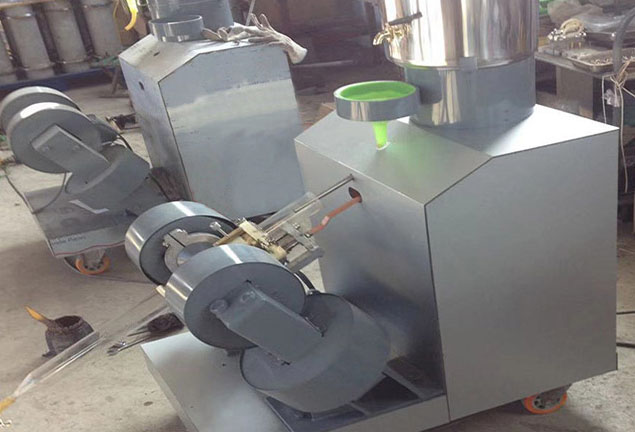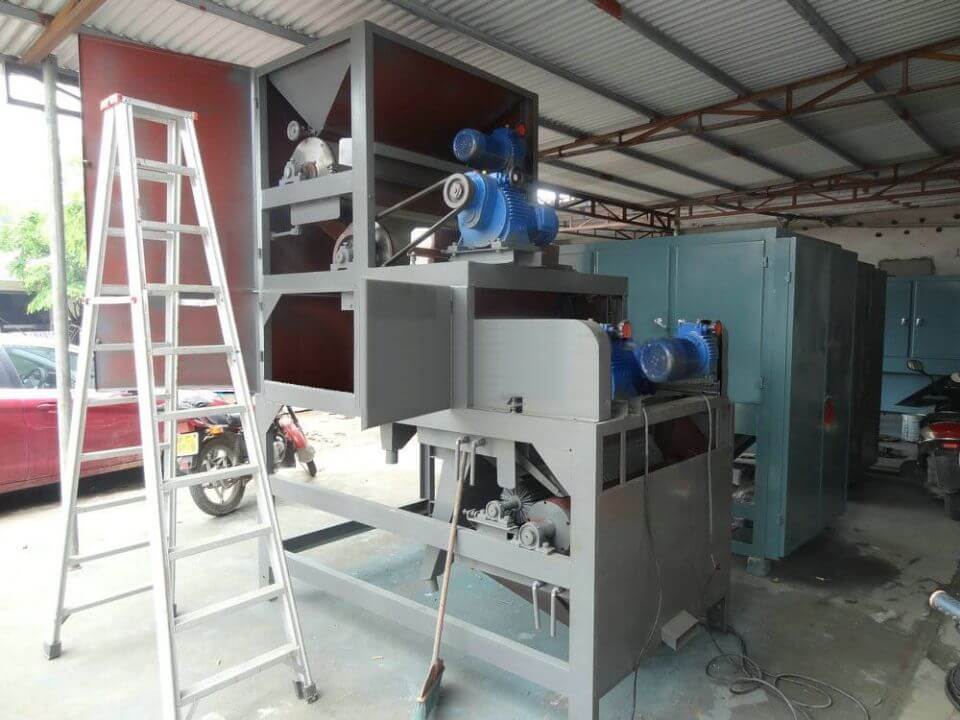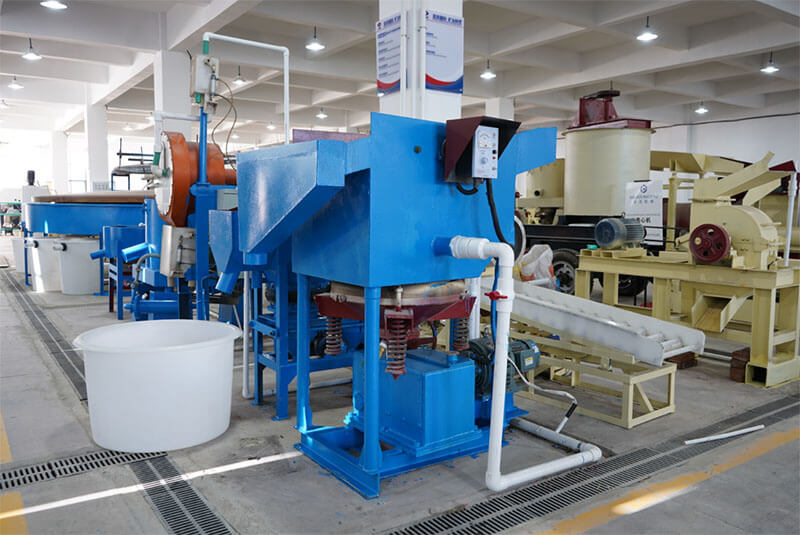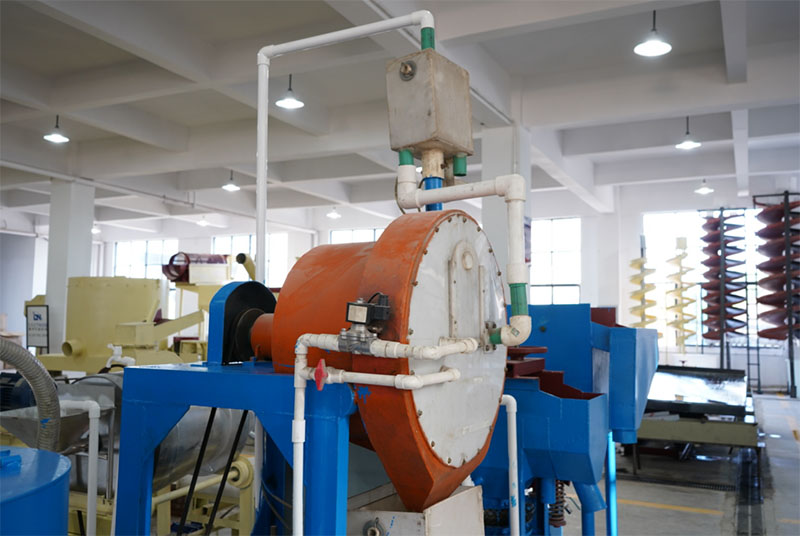The main mineral of quartz stone is silica, which generally contains various impurity minerals such as feldspar, mica, clay, and iron. It requires removing all impurities besides silica to produce high-purity and ultra-high-purity quartz raw materials. The main impurities are mineral compositions containing iron and aluminum, so how to purify quartz stone raw materials is mainly reflected in the effective removal of impurities containing iron and aluminum. According to the impurity components of quartz raw materials and the occurrence status of silica mineral particles on the surface. The quartz bebeficiation method mainly includes scrubbing, magnetic separation, flotation, acid leaching, etc. The silica is widely used in industries like glass, ceramics, metallurgy, casting, and refractory materials. Silicon powder has wide application, and the market demand is also high, so the profit and benefits of silicon powder processing are considerable, and the prospects are also good.
Beneficiation Method Of Quartz
1. Silica scrubbing purification
It will effectively remove mud impurities from silica minerals by grading operations. The main scrubbing methods include mechanical, rod friction, medicated, and ultrasonic scrubbing.
Mechanical scrubbing
Mechanical scrubbing removes thin films of iron and other impurity minerals from the surface of silica particles through equipment and the friction and collision between external forces and silica particles. Research has shown that silica scrubbing slurry concentrations between 50-60% can achieve ideal purification results.
Roller grinding washing
This process can enhance the scrubbing effect and change the particle size of silica minerals, providing a mineralogical basis for further selection of silica. The factors that affect the friction and washing effect of the rod include the concentration of silica slurry, washing time, amount of rod, and rod ratio. The process of rod friction and washing is selective, and the particle size of mineral products after washing is relatively uniform, with less over-crushing phenomenon.
Medicated strong scrubbing
Add drugs will increase the surface repulsion between silica and impurity mineral particles, and enhance the separation effect between mineral particles.
Ultrasonic cleaning
The secondary cast iron film is the main reason for the high iron content and difficulty in the purification of silica sand. This process can remove the secondary iron film on the surface of silica minerals. Use ultrasound to remove impurity minerals adhering to the surface of silica particles, achieving impurity removal and purification.
2. Magnetic separation and purification of quartz stone
- Magnetic separation and purification of quartz stone will effectively remove magnetic minerals. It includes associated minerals such as hematite, limonite, biotite, ilmenite, pyrite, and garnet, as well as mineral particles encapsulated in magnetic minerals. Magnetic separation purification includes dry and wet separation. The higher the magnetic field intensity, the higher the impurity separation rate for dry magnetic separation and purification of silica.
- The effect of magnetic separation on iron removal and purification of silica is directly related to the number of magnetic separations and magnetic field strength. The more magnetic separations there are, the lower the iron content of the concentrate. It removes most iron-containing impurities under a specific magnetic field strength. The increase in magnetic field strength has little effect on the iron removal rate. In addition, the finer the silica particles, the better the iron removal effect.
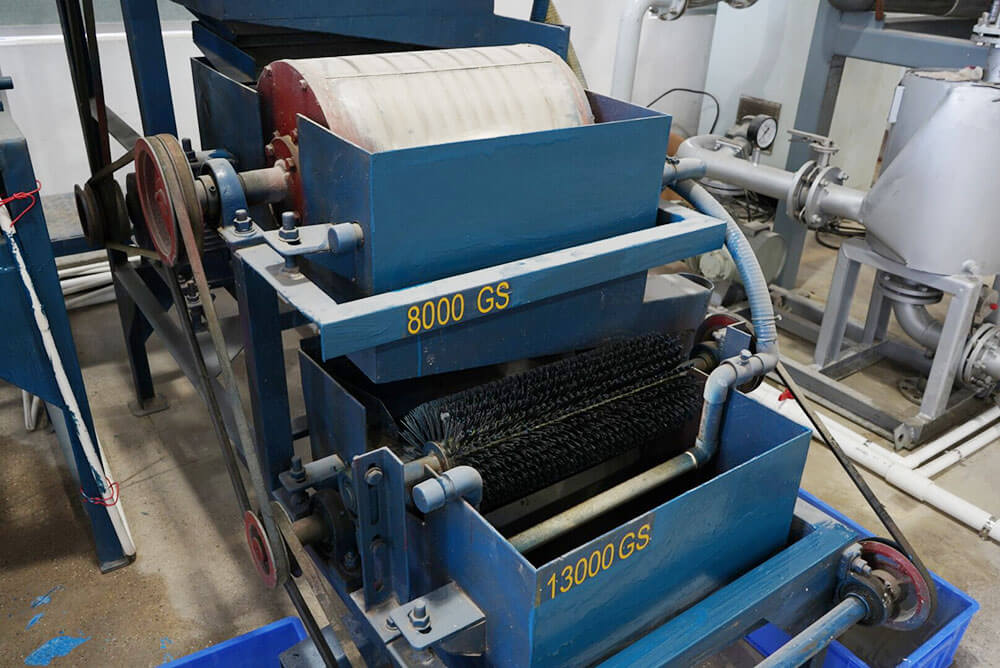
3. Quartz flotation purification
To further remove impurities and improve the purity of silica, adopt the flotation method for purification. Flotation purification of silica removes non-magnetic associated minerals such as feldspar and mica from ores.
Removal of impurities from feldspar minerals
Silica and feldspar are similar in physical properties, structural structure, and chemical composition. Flotation machine effectively separates these minerals. The conventional flotation processes are divided into three categories: fluorinated with acid, fluorinated without acid, and fluorinated without acid.
- Fluorine and acid: Hydrofluoric acid activator and cationic collector are for flotation separation of silica feldspar in a pH-acidic environment. The flotation effect is good, the process is easy to control, and the indicators are stable.
- No fluoride and acid: It avoids the damage of fluoride ions to the environment, but the strong acidic liquid in the flotation process can cause corrosion to the beneficiation equipment.
- Fluoride-free and acid-free: Under natural pH conditions, through reasonable mixing, using anions and cations as collectors, priority is given to the flotation of impurity minerals.
Mica mineral impurity removal
The charging mechanism of mica is the same as that of feldspar, so when removing impurities from feldspar in silica, simultaneously remove a large amount of mica ore by flotation along with feldspar. Use the E-8 collector to utilize the lattice charge characteristics of mica for flotation. In a slurry with a pH of 2-3, silica and silica hardly float, thereby flotation of mica impurities.
4. Acid leaching purification of silica
- Acid leaching purification utilize the principle that quartz is insoluble in acid (except for HF), and impurity minerals can be dissolved by acid, achieving the further development of silica. Common acid solvent oils include HCL, HNO3, H2SO4, HFF, etc. And reducing agents such as sulfite and its salts.
- The types and concentrations of applicable acids vary for different metal impurities. Various dilute acids have good effects on removing iron, aluminum, and magnesium. Concentrated H2SO4, aqua regia, or HF acid can remove titanium and chromium. The iron and titanium on the surface of silica particles can achieve good results through HF. The purification effect of acid leaching is related to mineral components, acid concentration, soaking time, temperature, mineral particle size, etc. According to actual conditions, adopt different acid solutions for purification operations .
Equipment for laboratory silica powder processing
The equipment include laboratory jaw crusher, silica grinding machine+classifier, spiral chute, magnetic separator, flotation machine, etc.
The purification of silica should be determined based on the occurrence status of impurity minerals in the raw materials, beneficiation cost, and the purpose and requirements of the finished concentrate. The editor suggests that enterprises should develop a reasonable silica beneficiation process flow and purchase professional production equipment according to the beneficiation test reports of formal laboratories to ensure that silica purification achieves the expected results.
JXSC lab mineral processing equipment manufacturer has more than 38 years of experience in mining processing. We provide various lab mining equipment including gravity-separating equipment for processing minerals such as gold, tin, tungsten, lead, zinc, tantalum, niobium, iron, manganese, silver, titanium-iron, etc. Lab machines include laboratory jaw crusher, hammer crusher, roller crusher, grinding equipment, lab gravity separator, screening, washing equipment, etc. Welcome to consult!

